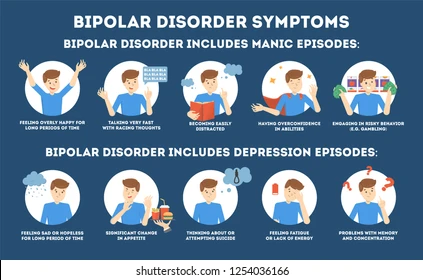Mood disorder is a broad term used to refer to mental health problems that affect one’s mood. Afflicting people of all ages, mood disorders lead to emotional issues that are disruptive.
Causing issues with physical and mental health, a mood disorder requires proper treatment for the management of the symptoms. However, symptoms may present as per the subcategory of the disorder, and hence being familiar with the different types of mood disorders are important.
Types of mood disorder
Depression
Depression is a mental health issue that leads to extreme blues and sadness. It causes people to experience bouts of tears, guilt, shame, low self-worth, and intensely low mood.
There are also different types of depression, which include:
Persistent depression disorder: PDD is a type of depression that involves less severe symptoms, but they persist for a long time.
Postpartum depression: A type of depression that affects new mothers, postpartum depression is a serious health concern. Due to the major transition of having a baby and the hormonal changes that occur after which birth, women are at risk for PPD that gravely impairs their functioning. An extreme form of PPD, postpartum psychosis is considered a medical emergency.
Depression with psychosis: Some people might have an aggressive form of depression, which also makes them get psychotic episodes. They might then have delusions and hallucinations in this state. A psychotic episode is a medical emergency, as people have a higher risk of committing suicide.
Major depression: Also known as clinical depression, major depression causes a lot of sadness. The symptoms of this mood disorder include low mood, hopelessness, guilt, shame, and fatigue. The symptoms tend to persist for at least two weeks.
Seasonal affective disorder: SAD is caused when there are weather changes. It is more common during autumn and winter, because of the low levels of light.
Bipolar disorder
Bipolar disorder is a mood disorder that causes people to experience poles apart moods. They are manic one moment and depressed the next. There are different types of bipolar disorders, some of which include:
Bipolar I disorder: In this condition, people experience greater episodes of mania, which then also causes them to exhibit risky behavior.
Bipolar II disorder: In bipolar II, people have depression, but the symptoms of mania are less intense.
Cyclothymia: People with cyclothymic disorder exhibit symptoms of hypomania and depression, for at least two years.
Others: There are other unspecified forms of bipolar disorder that might not meet the criteria of depression and mania but do experience the symptoms on a different spectrum.
Disruptive mood dysregulation disorder
DMDD is a mood disorder that affects children and adolescents. It causes them to be angry, irritable and have temper outbursts, often even unprovoked as well.
Substance-induced depressive disorder
This mood disorder occurs on account of the use of substances like medication, drugs, alcohol, etc., that then lead to depression.
Premenstrual dysphoric disorder
PMDD is mood disorder that affects women. These mood disorder symptoms include anxiety, insomnia, depression, irritability, anger, and mood swings. The symptoms set in around 10 days before the start of periods.


